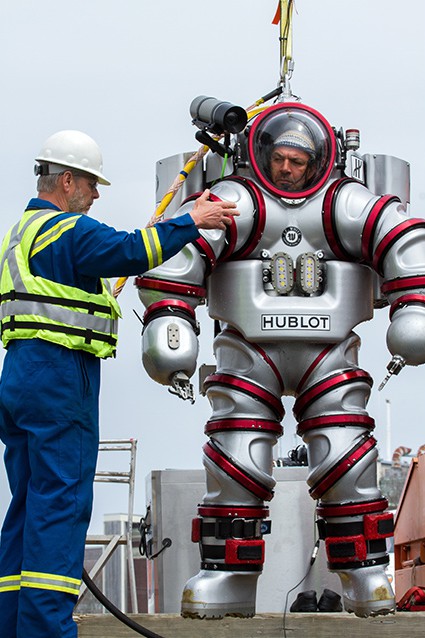Art World
Futuristic ‘Exosuit’ Helps Explore Ancient Computer Shipwreck


Sarah Cascone

A revolutionary new deep sea diving suit is helping archaeologists to fully explore the ancient shipwreck where they have discovered the world’s oldest computer, the AFP reports.
The ancient computer device, called the Antikythera Mechanism is an astrological clock dating to the second century BC. A highly complex device used to track the motion of the planets, it features at least 40 bronze cogs and gears and would not be matched by later Europeans for 1,500 years.
The technologically advanced analog computer was found along with a large bronze statue of a young man in a shipwreck discovered in 1900 off Antikythera, a remote Greek island in the Aegean Sea. The vessel is believed to have been a cargo ship bound for Rome, and archaeologists are confident that the new diving technology will lead to further discoveries at the site.
“This was a ship bearing immense riches from Asia Minor,” team member Dimitris Kourkoumelis told AFP. He believes “there are dozens of items left” to find among the ruins. In particular, the exhibition will search for a second ship they suspect is sitting some 820 feet from the original site.

A fragment of the Antikythera Mechanism at the National Archaeological Museum, Athens, Greece.
Photo: Tilemahos Efthimiadis/Wikimedia Commons.
“We may find one or more monumental statues that were left behind in 1901, in the mistaken belief that they were rocks,” added Brendan Foley, a marine archaeologist from the Woods Hole Oceanographic Institution at Massachusetts, which has previously assisted on a dive to the Titanic wreck.
The team will benefit from the futuristic Exosuit, designed by Canada’s Nuytco Research, which allows divers to descend 492 feet and still perform delicate tasks. Previously, archaeologists had been unable to work at a depth of more than 200 feet.
Other technological advances will also be at the team’s disposal. “We will have more bottom time than any previous human visitors to the site, because we dive with mixed gas rebreathers,” boasts the expedition’s website. “Each diver will have more than 30 minutes of bottom time per day, and will enjoy greater mental acuity and a larger safety margin than that of previous divers at Antikythera.”